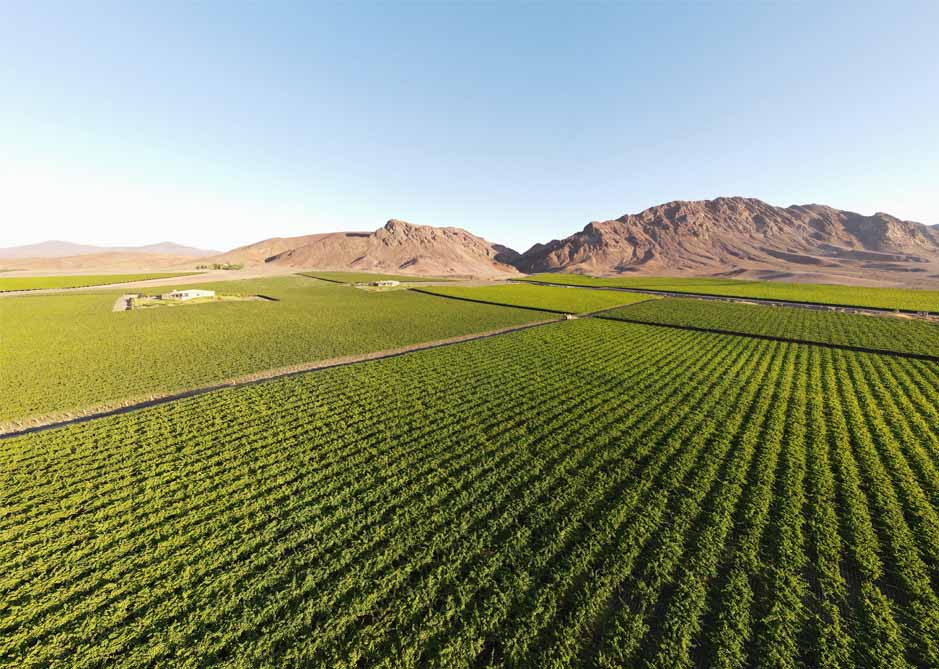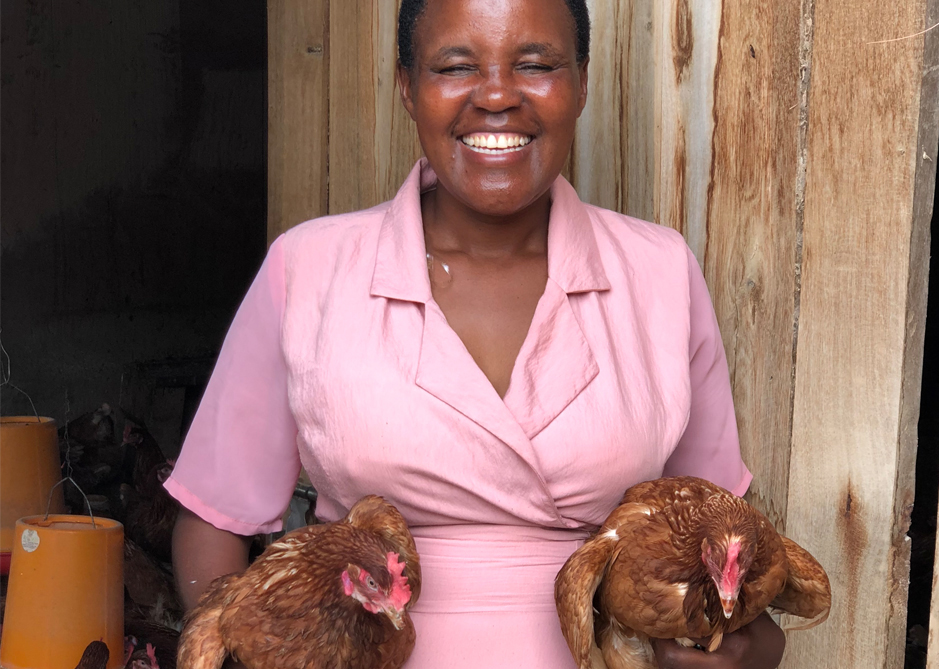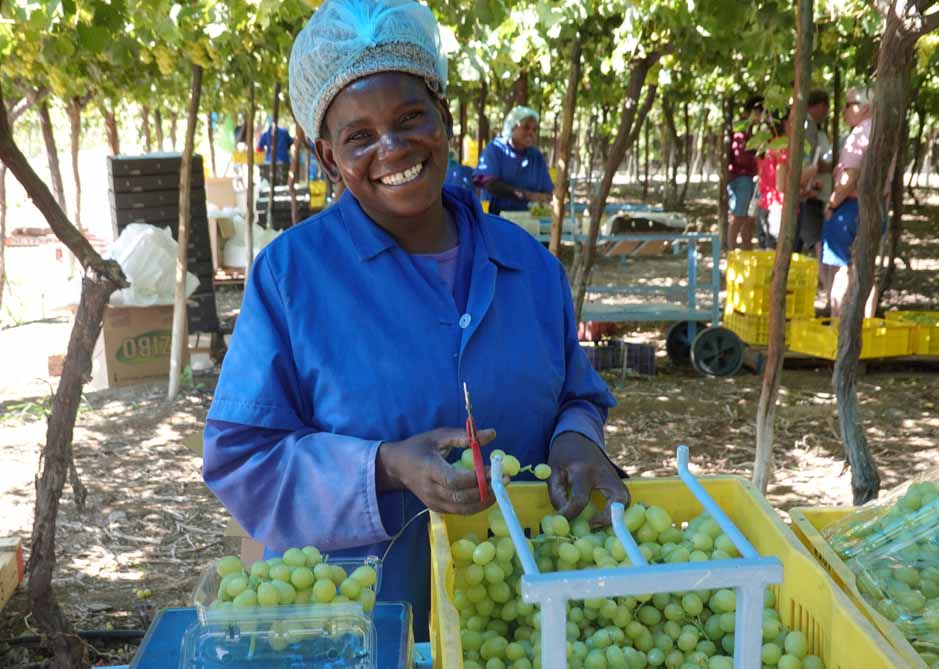Agricultural investing in Africa for profit and community
Focusing on ESG doesn't mean missing out on profits when it comes to global agricultural investments. The Rural Report visits a Knight Frank client in Africa to find out more.
6 minutes to read
When a closed-end fund reaches the end of its lifespan, success is usually measured in terms of income and capital appreciation. But for the managers at SilverStreet Capital it goes beyond that.
The African agriculture specialist is evaluating options for its Silverlands I portfolio, the continent’s largest agricultural investment fund, which was launched in 2011. Its investments include processing, primary production, beef and poultry assets across South Africa, Namibia, Eswatini, Zambia, Tanzania, Kenya, Uganda and Mozambique.
SilverStreet’s objective is to seek attractive returns for investors at the same time as achieving a substantial positive social, environmental and climate impact. Chris Dravers, an associate director in their investment team, says that their clients are keen to understand the impact outcomes their investments provide, as well as the returns.
“In 2020, our investments directly benefited 386,000 people economically, helping to increase smallholder farmer incomes by approximately US$300 annually from a baseline of US$600. This resulted in an annual increased community income of US$116 million,” he says.
Dravers’ colleague Luke Lowsley-Williams – SilverStreet’s environmental, social, governance (ESG) and impact analyst – emphasises that these community benefits aren’t so much a byproduct of the fund’s performance, but integral to it. “By investing to construct or fix a value chain, a ‘wave’ of impact is unlocked,” he says.
“By unlocking the value chain, the businesses benefit from increased scale and the smallholder farmers benefit from, for example, access to improved inputs, training and markets. This enables the businesses to grow alongside the positive impact. Most of the world’s population growth will occur in Africa over the next three decades, and this presents a unique opportunity to meet demand, reduce poverty and mitigate negative climate and environmental impacts. Building functioning agricultural value chains is integral to achieving this goal.”
Starting small
SilverStreet believes that investment in Africa is best focused on the region’s most important food producers – smallholder farmers who, with their families, still account for an estimated 60%+ of the sub-Saharan African population. Smallholder farmers typically grow low-value subsistence crops and achieve very low yields when compared with global averages. They also form the lowest income sector of these economies.
“These farmers have significant capacity to ramp up production. To improve productivity, smallholder farmers need high-quality inputs, such as high-yielding hybrid seed; on-farm support, such as training in conservation farming techniques; and markets for high-value products,” says Lowsley-Williams.
“There is a material productivity gain that can be achieved on smallholder farms by increasing yields, with a doubling possible in some important crops. By fixing value chains, offering technical assistance to smallholder farmers and providing markets for higher-value crops, incomes can increase dramatically.”

Adding value
When it comes to deciding where to allocate funds, pre- and post-farm gate opportunities are often the driver, says Dravers. “We are particularly looking for incomplete value chains that hold significant potential for growth.”
The fund’s rejuvenation of the Tanzanian poultry sector, which was being held back by underperforming breeds and low-quality feed, is a very good example of how financial returns can go hand-in-hand with creating a positive impact.
A lack of accessible protein was resulting in high levels of childhood-growth stunting in Tanzania. This can in part be solved by “fixing” the poultry value chain, as one egg per day can halve the risk of stunting. Soya beans, which provide the main source of protein in chicken feed, was not grown in Tanzania because there were no soya processing facilities. This hampered the poultry value chain, which instead relied on salmonella-ridden and unsustainable fishing.
To solve this, SilverStreet invested capital into Silverlands Tanzania to build the country’s first soya processing plant and a large feed-mill. This made it viable for surrounding smallholders to produce soya, a high-value crop, to be processed into improved poultry feed.
New, modern and more efficient poultry breeds – in particular the dual-purpose and free-range Sasso breed – were then introduced and are sold as day-old chicks. Silverlands developed a national network of 18 distribution centres supplying over 300 agents, and provides skills transfer to smallholder farmers via the Silverlands Poultry Training Centre, online portals and a team of extension officers across the country.

The business expanded rapidly from a standing start and is now benefiting 116,000 smallholder farmers directly, around 70-80% of whom are women. These include 15,300 grain smallholder farmers who supply the business with soya, around two-thirds of whom are women and 100,400 poultry smallholder farmers. In 2020, over 43,000 tonnes of feed and 11 million day-old chicks were sold, from zero in 2013.
“We have unlocked the entire value chain for the benefit of smallholder farmers, improved local protein availability and ultimately created a profitable investment for our investors,” points out Lowsley-Williams.
Risk management
An impact approach to investing can also help to mitigate some of the challenges of operating in Africa, which Dravers likes to divide into two buckets: macro-economic- and political-related risks; and execution risks.
“Macro-related risk mitigation starts with careful selection of countries and we have developed a risk-scoring system that is quantitative but with a subjective overlay. We spend a lot of time in our investment appraisal process finding optimal locations, not only climatically but also by having good infrastructure and good market access,” he explains.

“For example, we grow table grapes in a unique location in southern Namibia. It not only has strong climatic advantages, with no frost or hail, but the business is able to harvest during a pre-Christmas window when global supply is limited, allowing us to command a premium price from our European supermarket customers.”
To manage political-related risk, certain businesses are covered by political risk insurance provided by the US Development Finance Corporation and MIGA, a department of the World Bank. Delivering a genuine social impact also helps mitigate risk, Dravers says. “Providing positive outcomes for local communities and smallholder farmers allows us to receive support from the government, who understand the importance of both developing the agricultural sector and inward private investment.”
When it comes to risk management, putting in place top management teams with deep sector experience is the key mitigation that helps overcome most challenges, reckons Dravers. “Sourcing top talent can be more challenging in countries that are harder to operate in, but we work hard to ensure we have the right people at all levels.”

Future plans
The sale of the businesses owned by the Silverlands I fund offers investors the opportunity to benefit from the work of the SilverStreet team, but there will be a rigorous vetting process to ensure investors share the same ethos. And while individual businesses will be of interest to some parties, the real potential for value creation lies in the whole, claims Dravers.
“When the portfolio was initiated, the thought process wasn’t just about individual opportunities, it was about creating a platform of assets diversified by both sector and geography. This was to manage fund risk and also develop something of scale that would appeal to a wider number of buyers and investors. We believe there is a good opportunity for like-minded investors to build on this platform and create a single regional agribusiness.”
SilverStreet is also continuing to deploy its second fund, Silverlands II, set up in 2016. It so far has made three investments, one in the seed sector in Zambia, one in a table grape and date palm business in Namibia, and another in a regional poultry business.
Overall, the strategy will remain unchanged: continuing to seek attractive returns for investors while achieving a substantial positive social, environmental and climate impact.
Community centre
- Number of lives improved by Silverland funds
- Employed +10,400
- Direct economic benefit 386,000
- Secondary impact 2.3 million
For advice on agricultural investments and valuations in Africa, please contact susan.turner@za.knightfrank.com